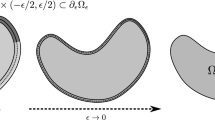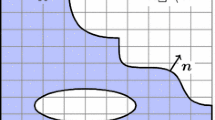Abstract
A novel meshfree weak–strong (MWS) form method is proposed based on a combined formulation of both the strong-form and the local weak-form. In the MWS method, the problem domain and its boundary is represented by a set of distributed points or nodes. The strong form or the collocation method is used for all nodes whose local quadrature domains do not intersect with natural (Neumann) boundaries. Therefore, no numerical integration is required for these nodes. The local weak-form, which needs the local numerical integration, is only used for nodes on or near the natural boundaries. The locally supported radial point interpolation method and the moving least squares approximation are used to construct the meshfree shape functions. The final system matrix will be sparse and banded for computational efficiency. Numerical examples of two-dimensional solids are presented to demonstrate the efficiency, stability, accuracy and convergence of the proposed meshfree method.
Similar content being viewed by others
Author information
Authors and Affiliations
Corresponding author
Rights and permissions
About this article
Cite this article
Liu, G., Gu, Y. A meshfree method: meshfree weak–strong (MWS) form method, for 2-D solids. Computational Mechanics 33, 2–14 (2003). https://doi.org/10.1007/s00466-003-0477-5
Received:
Accepted:
Published:
Issue Date:
DOI: https://doi.org/10.1007/s00466-003-0477-5




